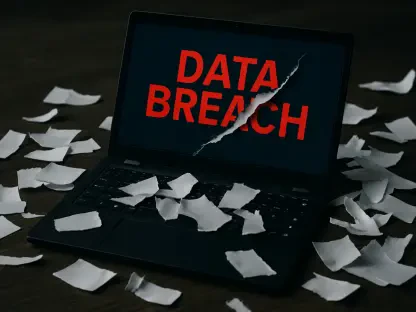In today’s interview, we dive into the monumental changes happening within the CDC’s vaccine recommendation committee. We are joined by James Maitland, though not directly involved, his insights into regulatory and policy changes are incredibly valuable due to his extensive expertise in technology applications in healthcare. This discussion will explore the rationale behind the recent dismissal of the CDC panelists, what this means for future vaccine recommendations, and how these decisions may affect public trust in vaccine science.
Can you explain the reasons behind the abrupt firing of the 17 panelists from the CDC’s vaccine recommendation committee?
The firing of the 17 panelists has certainly stirred up significant discussions. Officially, the reason provided by Robert F. Kennedy Jr. is to “re-establish public confidence in vaccine science” by addressing perceived biases and conflicts of interest within the existing committee. It’s a move aimed at restructuring the framework to ensure that the advisory committee can make impartial and scientifically sound decisions without external influences overshadowing their recommendations. However, it also brings concerns about how these changes might align with certain skeptical perspectives.
How do you plan to address concerns about potential conflicts of interest and skewed science within the CDC’s vaccine panel?
To address these concerns, transparency and rigorous vetting of new panel members will be crucial. It’s about finding individuals who not only have the scientific expertise but also a clean history concerning potential conflicts of interest. Ensuring that all decision-making processes are open and well-documented can help build trust and showcase that the recommendations are purely based on the best available scientific evidence, untouched by outside pressures.
What qualities or expertise are you looking for in the new committee members who will replace the departing panelists?
The new committee members should embody both deep expertise in immunization and an understanding of the public health landscape. They should possess a proven track record of unbiased scientific evaluation and be able to bring fresh perspectives that prioritize public health without personal or financial biases. The goal is to balance diverse viewpoints and ensure comprehensive evaluations of vaccines from all possible angles.
How do you respond to concerns that the new panel could be more aligned with your skeptical views on vaccines?
It’s important to reassure stakeholders that the intention is not to skew science in any direction but rather to reset the foundation on which these discussions take place. By focusing on impartiality and evidence-based decision-making, the goal is to have a committee that operates independently of specific biases, including skepticism, to best serve public health interests.
What measures will be in place to ensure the new committee provides objective and science-based recommendations?
Implementing robust guidelines and ethical oversight will be fundamental to maintaining objectivity. This includes having clear protocols for how recommendations are formed and ensuring those processes are subject to external audits. Additionally, engaging with other scientific bodies can help cross-verify recommendations, adding layers of credibility and transparency to the committee’s actions.
Can you provide any insights into what the upcoming advisory meeting on June 25-27 will cover in terms of vaccine recommendations?
The upcoming advisory meeting is anticipated to address important topics such as updates on COVID-19 vaccines and other related immunizations. While the detailed agenda has yet to be published, it will likely focus on reviewing the latest data on vaccine efficacy and safety, setting the stage for future recommendations that align with both current needs and scientific advancements.
How do you plan to manage the potential regulatory delays that vaccine makers like Novavax and Moderna might face due to these changes?
Open channels of communication with these companies are vital to managing expectations and minimizing disruptions. It’s essential to work closely with regulatory bodies to ensure that any new requirements are practical and within a timeframe that does not hinder the timely development and distribution of vaccines. Collaborations and dialogues can help mitigate barriers and create pathways for manufacturers to adapt to new guidelines efficiently.
How will the firing of the ACIP members impact the CDC’s guidance on which vaccines insurers must cover?
The impact on insurance coverage could be significant, as ACIP’s guidance directly affects which vaccines insurers are mandated to cover. The objective is to have the transition to the new committee be as seamless as possible, ensuring that current recommendations remain in effect until a thorough review is completed. This continuity is crucial to avoid disruptions in coverage and ensure that patients still have access to necessary vaccines.
What might be the potential effects on the Vaccines for Children Program due to these changes in the advisory committee?
There’s a concern that changes could disrupt the Vaccines for Children Program, which hinges on ACIP’s lists of recommended vaccines. The aim is to fortify the committee’s guidance so that it remains aligned with the program’s objectives of providing essential vaccines to children in need. Stakeholders need assurance that these changes will not compromise access or the quality of public health programs serving vulnerable populations.
How do you address the concerns expressed by analysts like Myles Minter and Daina Graybosch regarding the future of vaccine development and recommendations?
The apprehensions raised by analysts highlight the need for clear communication and steadfast dedication to scientific integrity. Engaging with industry experts and analysts can foster a mutual understanding of the goals driving these changes, helping to alleviate fears about the future direction of vaccine development. Transparent dialogue is essential for bridging gaps and aligning on a collective vision for advancing public health measures.
Why did you decide to make these changes now, given the context of needing public confidence in vaccine science?
Now, more than ever, public health decisions are under intense scrutiny. The timing aligns with the greater objective of restoring and reinforcing public trust by demonstrating a commitment to ethical and objective evaluations of vaccines. Given the contentious landscape of vaccine acceptance, it’s a pivotal moment for reinforcing confidence in vaccine safety and efficacy by revitalizing the advisory process.
How do you plan to maintain the support of individuals like Sen. Bill Cassidy who have expressed concern over the committee’s composition?
Building and maintaining relationships with influential figures like Sen. Bill Cassidy requires ongoing dialogue and assurances of the committee’s direction. It’s about demonstrating through actions and decisions that these changes are in the best interest of public health. Regular updates, transparency in the selection process, and concrete examples of the committee’s commitment to unbiased science will be crucial in sustaining political support.
Do you have any advice for our readers?
For readers, the most important advice is to stay informed and engaged with the scientific process behind vaccine recommendations. Understand that changes and updates are part of ensuring safety and efficacy. It’s vital to rely on trustworthy sources and participate in public discourse to help foster a culture that supports health and informed decision-making.









